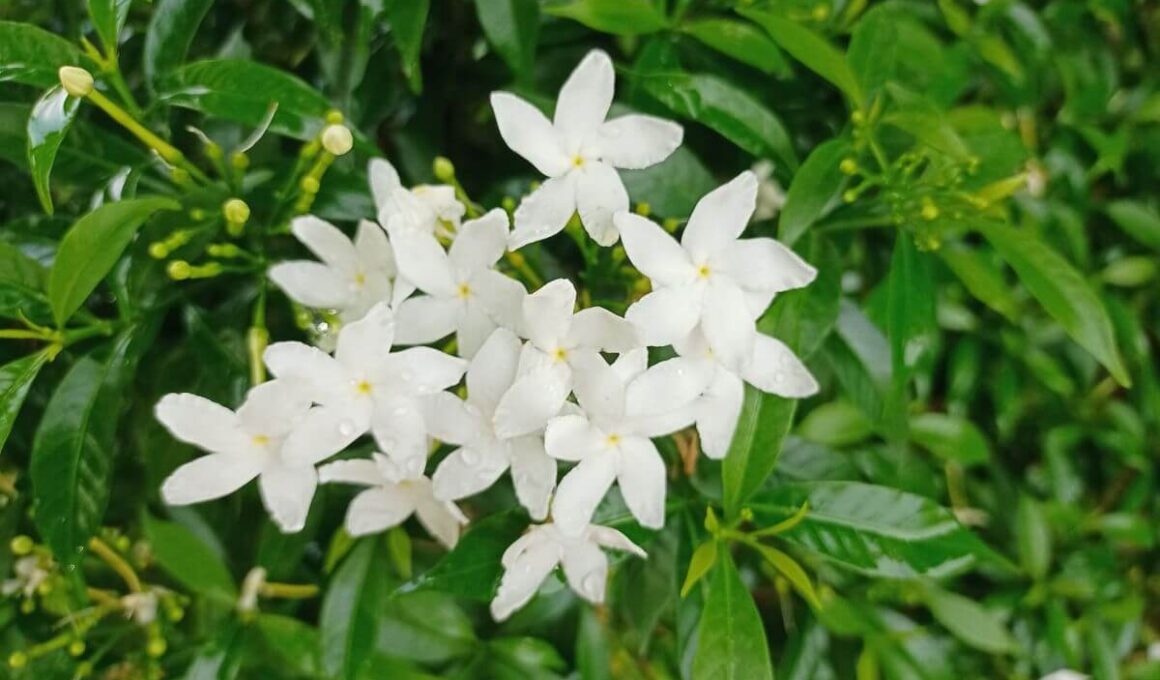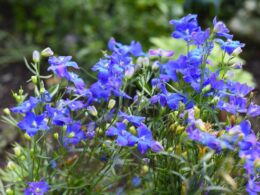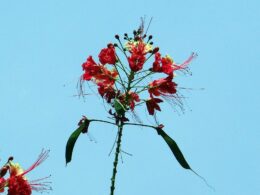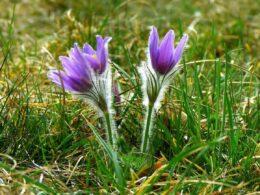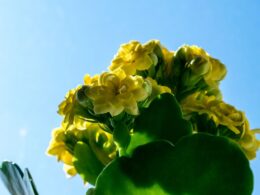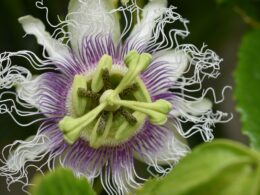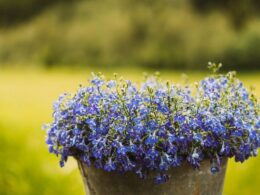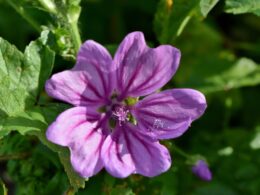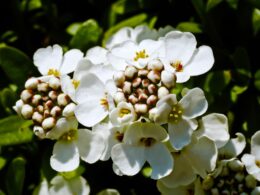About the Sampaguita Plant (Arabian Jasmine)
The common name sampaguita flower refers to Arabian jasmine (Jasminum sambac). It’s native to tropical Asia, and the plant can be an evergreen vine or shrub. It can grow up to 10 feet tall, but the size varies greatly depending on the cultivar.
The sampaguita plant is known for its beautiful, fragrant flowers. The flowers have five white petals and a yellow center. They bloom in clusters of 3 to 12 and are about an inch in diameter. The flowers are quite delicate and only last for a night, but they bloom all year round!
Arabian jasmine is significant in many communities, including the Philippines, Cambodia and Indonesia. In Hawaii, it’s often used in leis. Sampaguita flowers are also cultivated worldwide and used to make perfume, tea, and essential oils for aromatherapy.
Sampaguita Flower Meaning in Different Cultures
In the Philippines, sampaguita flowers are often given as gifts (to bestow honor or accolade) or used to decorate religious altars. They’re strung into leis, corsages, and crowns to be used in celebrations and funerals.
Arabian jasmine was adopted as the national flower of the Philippines in 1934, and it’s the Filipino language that the name ‘sampaguita’ comes from.
In Indonesia, the plant is known as melati putih and is one of the three national flowers, along with the moon orchid and giant padma. Traditionally, it’s been considered to be a sacred flower symbolizing purity, simplicity and sincerity. They’re commonly used in garlands on weddings and are also said to represent fallen heroes.
Cambodians offer sampaguita flowers to statues of the Buddha as a sign of respect. In Oman, these plants are featured on first birthdays, and in India, it’s used in meditation and worship. As you can see, sampaguita flowers have a lot of different meanings in different cultures!
Growing and Caring For Jasminum Sambanac
Sampaguita can be grown in tropical climates, and it does best in full sun or partial shade. It prefers warm temperatures and moderate to high humidity. If you live in a warm climate, or if you have a greenhouse, you can successfully grow sampaguita.
The cultivated plants don’t produce seeds, so they’re propagated by cuttings. After the cuttings have rooted and established themselves, you can transplant them into the ground. Water the plants when the top two inches of soil are dry to the touch. Feed them with a slow-release fertilizer (ratio 10-30-10), and you’ll have beautiful, fragrant sampaguita flowers in no time.
We hope you enjoyed learning about the sampaguita flower and its meaning. Now that you know a bit more about this plant, why not try growing it yourself? Happy gardening!





